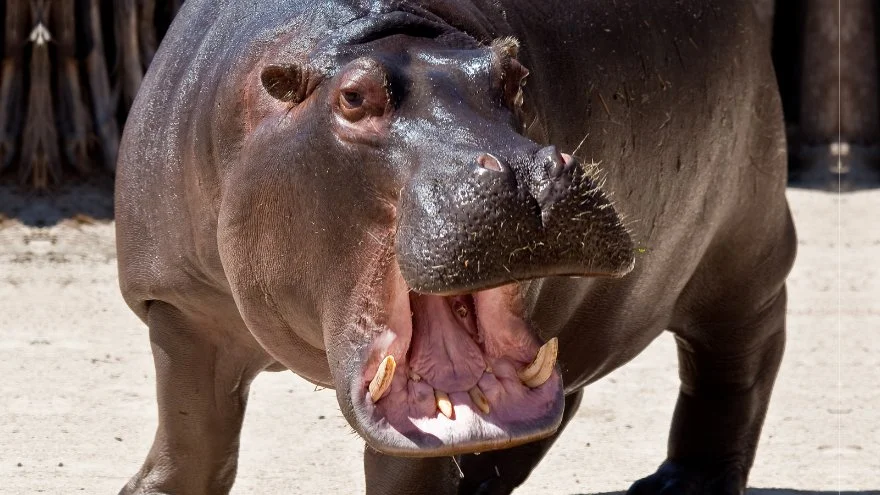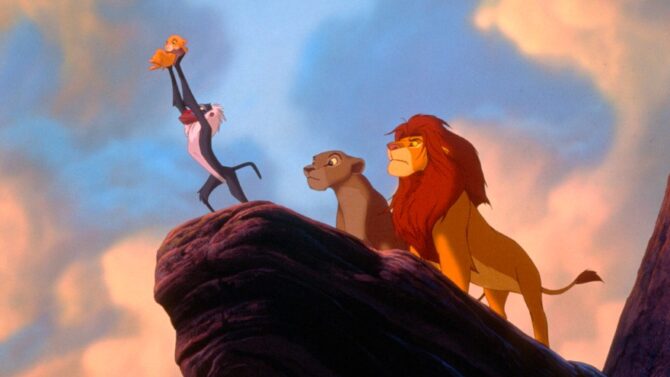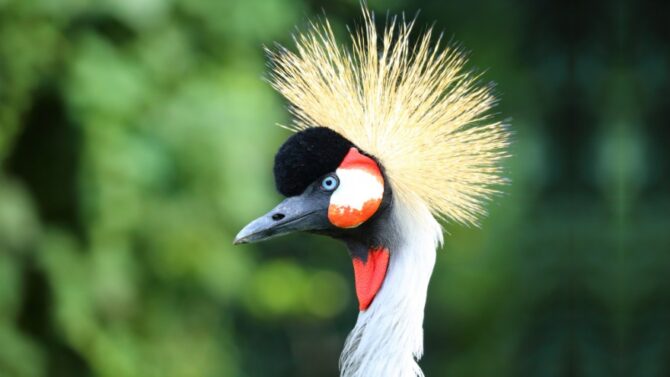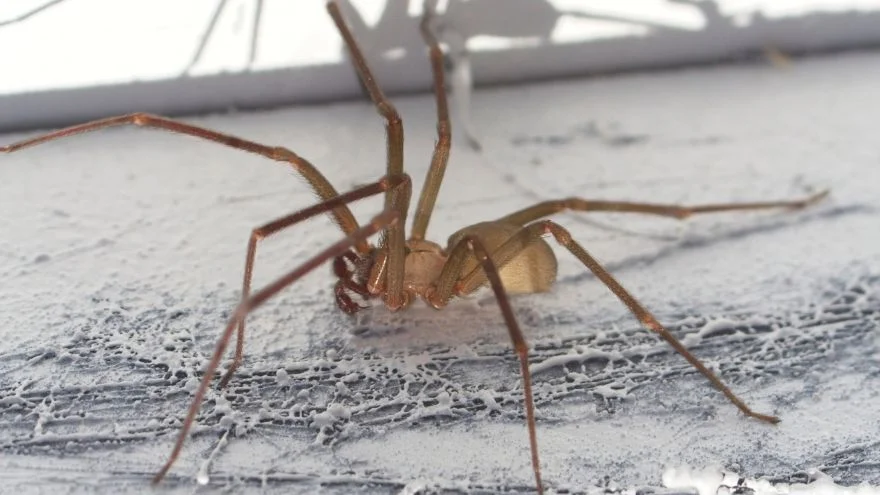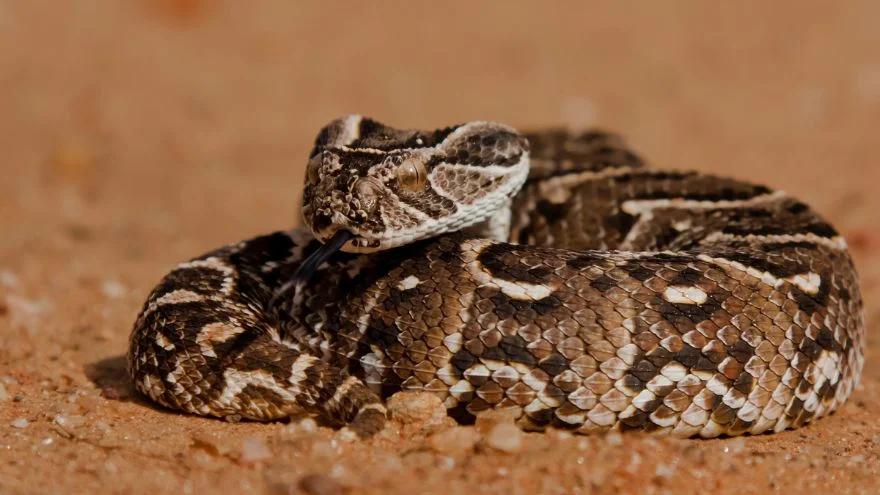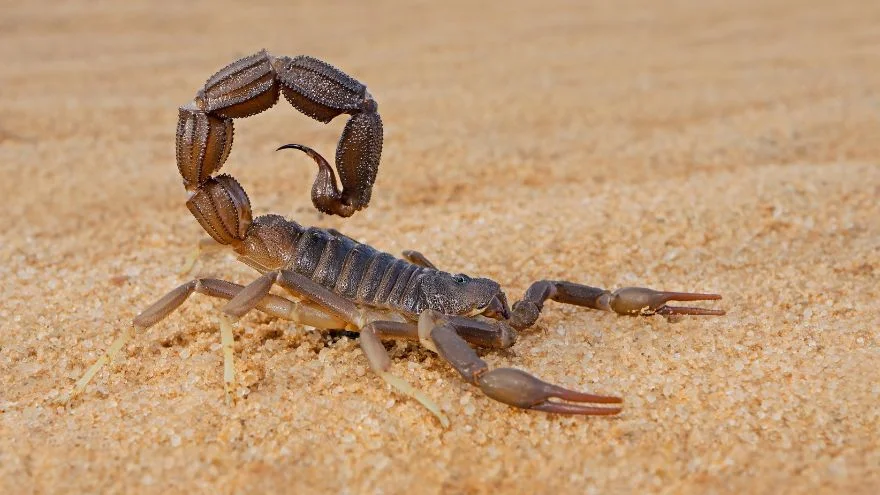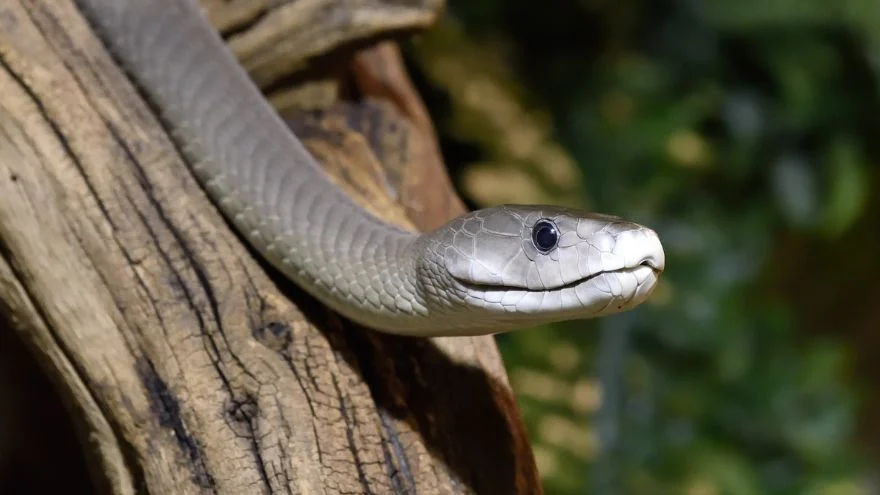With a wide range of unique ecosystems and animals, South Africa is one of the most diversified nations in the world.
There are many unusual animal species that most people are unfamiliar with that can be found in South Africa.
Hippos, black mambas, African buffalos, and, shockingly, mosquitoes are only a few of the most dangerous animals in South Africa.
This article lists the top 15 dangerous wildlife in South Africa along with some practical safety advice in case you ever find yourself in their habitat.
What are the Most Dangerous Animals In South Africa?
Here are 15 dangerous animals that you should know about before going to this beautiful country:
1. Hippopotamus
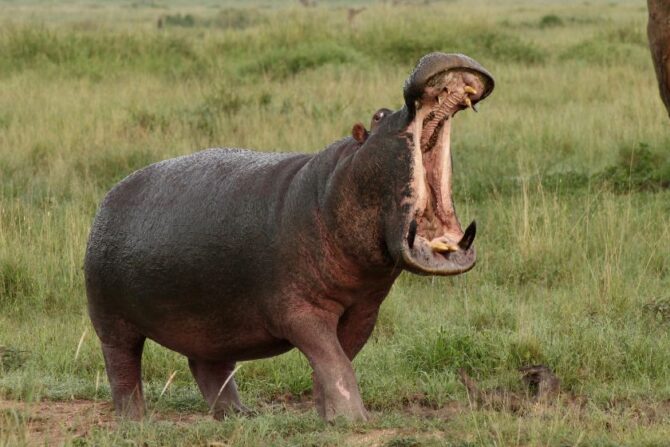
Habitat: Water bodies; rivers, lakes, mangrove swamps, freshwater habitats, and estuarine waters.
The biggest hippos concentration may be in South Africa, particularly in the iSimangaliso Wetland Park.
They are the most dangerous animal you will encounter in the nation because of their extreme aggression toward people.
Their territorial nature prevents them from tolerating humans approaching them or their habitat.
In Africa, hippopotamuses are thought to claim the lives of 500 humans annually.
This borderline deadly animal frequently makes headlines for the wrong reasons, such as when it viciously mauls defenseless people or snaps a boat in half with its strong jaw.1
A hippo is alleged to have murdered three adults and badly injured a kid in South Africa in 2015.2
2. Cape Buffalo (also African Buffalo)
Habitat: Coastal savannas, mountains, woodlands, swamps, lowland floodplains, meadows, wetlands, etc.
The Cape buffalo is the largest bovine native to South and East Africa, often known as the “Inyati.”
Because they are so harmful to people and animals, they are frequently referred to as the “Black Death.” Each year, 200 individuals are said to die as a result of their attack.
The Cape buffalo spread some epidemic diseases, including rift valley fever and bovine tuberculosis.
Avoid strolling beside a Cape buffalo since it is nearly hard to stop one once it starts charging at you.
3. Black Mamba
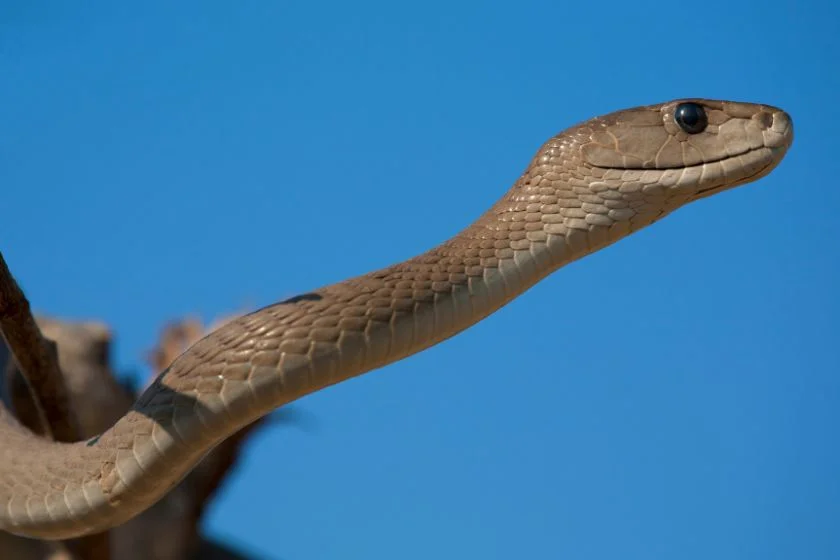
Habitat: Rocky hills, lowland forests, semi-arid savannas, light and open woodlands, scrub, mountain peaks, etc.
Fun fact: A black mamba’s skin can be gray, brown, or olive. They are so named because when they feel threatened, the inside of their mouths turns blue-black.
The black mamba is a poisonous snake that is indigenous to Southern Africa and is regarded as the deadliest snake in the world.
Naturally shy animals, black mambas almost always try to flee when approached. However, if cornered, these snakes will become aggressive and strike repeatedly.
You may want to avoid conflict with them because they are extremely quick snakes that can move at rates of up to 12.5 miles per hour.
4. Mosquito
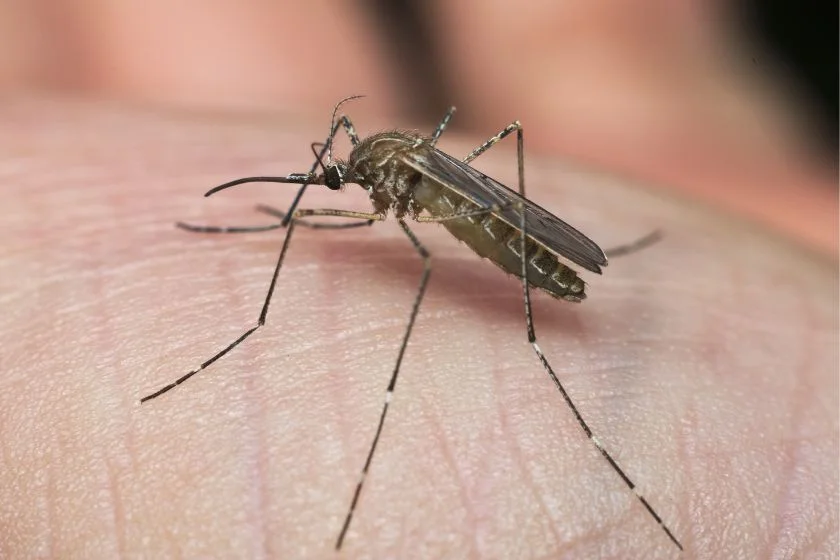
Habitat: Water, forests, plants, trees, tall grasses, artificial structures, ponds, swamps, marshes
Probably the most harmful animal in Africa is the little mosquito. Each year, they infect more than 70 million people with various potentially fatal diseases like Yellow, dengue, West Nile, Zika, and malaria.
The number of malaria cases worldwide increased from 229 million in 2019 to 241 million in 2020, according to the most recent World malaria report. The expected number of malaria-related deaths was 627,000 in 2020.3
There is a risk of contracting malaria, a potentially fatal illness, from these insects in various parts of South Africa.
The far north of Kwa Zulu-natal Province, which borders Mozambique, White River, and the northeastern Province of Limpopo, are among the nation’s high-risk locations.
5. Lion
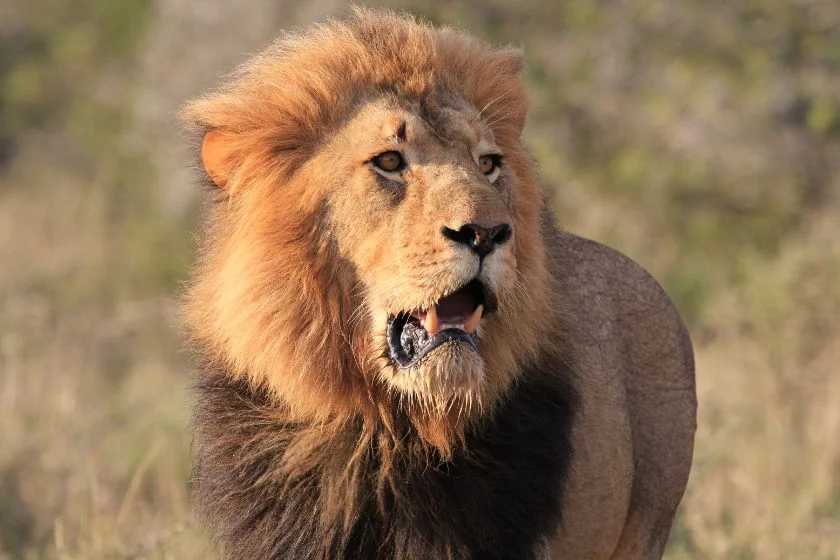
Habitat: Open plains, thick bush, savanna, shrublands, grasslands, dense scrub, dry thorn forest.
Throughout history, people have revered the beautiful South African lion as representing strength, courage, and power.
They are the largest and friendliest of all African cats (they once roamed Europe, Asia, and much of Africa.)
The lion subspecies in South Africa are called the Southern African lions, Panthera leo melanochaita.
They are the remaining lions in South Africa that can still be seen in the wild in some parts of the country after the Cape lion was essentially driven to extinction in the 1860s.
There are over 13,000 lions in South Africa, but only about 2,300 are wild; the rest are in game reserves and captivity.
The 19,623 square kilometer Kruger National Park is one of Africa’s largest game reserves and is situated in the northeast of the country, near the borders of Zimbabwe and Mozambique, and is home to the majority of wild lions in South Africa.
Smaller populations can be found in the Addo Elephant National Park in the Eastern Cape (about 25), the border region with Botswana (about 40), and Hluhluwe-Imfolozi Park in KwaZulu-Natal (about 120).
Despite their reputation for being extremely violent, lions usually avoid hunting people when they encounter them. Nevertheless, lions have been killing people in the wild, particularly when starving.
The lion may also strike if it feels threatened and aggravated by the human. The sad event when an American woman was killed by a lioness that came at her through the car window while trying to capture some shots while on safari in South Africa in June 2015 serves as a warning that lions are apex predators that prey on people.4
6. Nile Crocodile
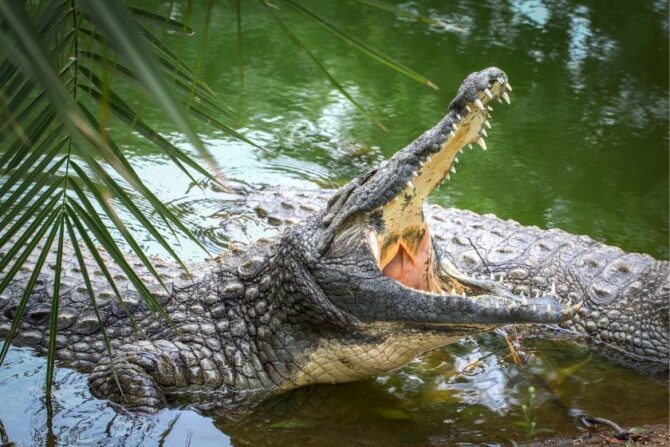
Habitat: Brackish streams, dams, freshwater, flowing rivers, mangrove swamps, tidal lakes.
The Nile crocodile is one of the most dangerous creatures in South Africa. It naturally occurs in the nation and is a fearsome freshwater predator, maybe the second-largest living reptile in the world after saltwater crocodiles.
They can attack and kill practically any animal that comes into touch with this violent kind of crocodile.
The Nile crocodile has a ferocious bite that is unmatched by any other animal and may kill or seriously injure large prey.
The Nile crocodile is a dangerous crocodilian species that kills hundreds of people yearly.
They are among the largest reptiles on Earth, and their size makes them extremely dangerous when provoked, even though they are not hostile toward humans unless provoked first.
It is better to avoid provoking them because they can eat and swallow people whole if given a chance.5
7. Transvaal thick/fat-tailed scorpion
Habitat: Sand, shrubs under rocks and logs.
One of the largest scorpions in South Africa is the Transvaal thick-tailed scorpion, which is found in the provinces of KwaZulu-Natal, Limpopo, and Gauteng. It can reach a maximum length of 90 to 140 millimeters and have a thick, prolonged tail.
The thick-tailed scorpion has lighter pincers and is often dark brown to black. It lives in a bushveld habitat, typically found under rocks, logs, and other debris.
The South African thick tail and enormous deathstalker are other names for this big species of scorpion.
Although the kurtoxin venom of the Transvaal thick-tailed scorpion is extremely dangerous, it also has significant medical use.6 It is one of the deadliest in Southern Africa and has a neurotoxic venom that, if left untreated, can kill.
8. Sac spider
Habitat: Forest, under vegetation, bark, debris, etc.
Because they consume flies and mosquitoes, spiders may appear harmless to people, yet some species can bite you painfully. There are certain venomous spiders in South Africa.
Their bites can aggravate existing medical conditions in some persons, especially the elderly, children, and those with compromised immune systems and allergies.
According to legend, sac spiders are the most dangerous spiders in South Africa. They are extremely toxic and aggressive spiders that can seriously hurt people.
Their venom can also have harmful effects on cells and nerves. Although sac spiders are to blame for 70–80% of all reported spider bites in South Africa, they have not been connected to any significant cases of spider envenomation there.7
Keep your environment clean and regularly to prevent the sac spiders from spotting a place to hide. Please ensure a booster tetanus shot if you are ever bitten by one.
9. Puff Adder
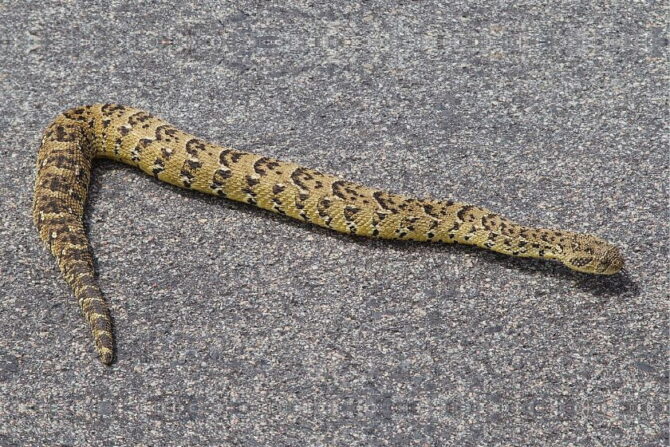
Habitat: Savannas, grasslands
Due to its widespread distribution, frequent appearance in densely populated areas, and aggressive nature, the clever Puff Adder is considered the deadliest snake in Africa and is to blame for most snakebite fatalities in the continent. It is widely accessible in South Africa.
The average length of a puff adder is around 1.0 m, while larger species can grow up to 190 cm in total length. Male puff adders are often larger and longer than females.
The average length of a puff adder is around 1.0 m, while larger species can grow up to 190 cm in total length.
The color pattern of a puff adder differs depending on where it is found, but you can identify one by the two distinct dark bands on its head—one on the crown and the other between the eyes. It is a slow-moving snake species that hides via camouflaging, yet it may move at a startlingly fast rate when irritated.
Despite having less toxicity than a black mamba, puff adders bite more people and result in over 32,000 fatalities yearly.
Because it will puff out its body to appear larger than it is when directly threatened by a predator or a person, this gigantic snake earned its moniker.
The puff adder was given the scientific name arietans, which means “striking violently,” by the German naturalist Blasius Merrem in 1820 because, during a strike, the puff adder moves so quickly and strikes its prey with such a powerful force with its long fangs penetrating deeply, that preys are frequently killed by the physical trauma alone.
This species’ bites can cause serious local and systemic symptoms in humans. Bite symptoms can be categorized into two groups, those with little to no surface extravasation and those with hemorrhages visible as ecchymosis, bleeding, and swelling, depending on the severity and type of local effect.
Both situations involve excruciating pain and tenderness, but the latter also features compartment syndrome and widespread superficial or deep necrosis.
Serious bites result in substantial bleeding or coagulation in the afflicted muscles, which causes limbs to become immovably flexed.
Humans may also experience shock, edema, watery blood seeping from puncture wounds, nausea, vomiting, subcutaneous bruising, blood blisters that may form quickly, and painful swelling of the local lymph nodes in response to bites.
In most cases, swelling goes down within a few days, except for the region next to the bite site. Additionally, reported symptoms include hypotension, weakness, wooziness, and moments of semi-consciousness or unconsciousness.
Necrosis spreads if it is not carefully managed, causing muscle, skin, and subcutaneous tissue to become detached from healthy tissue and slough with serous effusion.
10. Chacma Baboon
Habitat: Trees, savannas, sub-desert, steppes, high, rocky outcrops, woodlands.
One of the biggest monkey species, the Chacma baboon, is found mostly in Southern Africa, with substantial populations in Mozambique, Namibia, and Botswana.
These baboons are so violent and deadly that they don’t get along well with people. They would aggressively retaliate against their predators if threatened.
A single glance reveals all you need to know about a Chacma baboon. It can spread some infections to people and is large and frightening. These baboons pose several possible health dangers for people.8
Even though killings by Chacma baboons of people are sporadic, it is nonetheless possible.
11. Red Lionfish
Habitat: Shallow and artificial coral reefs, holes and crevices, tropical waters, and all marine habitats.
The red lionfish is a natural component of the coastal ecology of South Africa – It is one of the most invasive creatures on Earth that behaves violently.
The fish is easily identified by its venomous spiky fins, which are unusual among reef-dwelling fishes along the American East coast and the Caribbean. This feature serves as a form of protection for the fish, making it challenging for predators to eat it.
The highly strong venom from a lionfish’s spiky fins can induce serious allergic reactions in people, including chest pain, a drop in blood pressure, tongue swelling, shivering, nasal congestion, or lightheadedness.
Other symptoms include extreme pain, nausea, vomiting, fever, breathing problems, convulsions, dizziness, redness in the affected area, headache, numbness, paresthesia (pins and needles), heartburn, diarrhea, and sweating systemic effects that it may potentially produce.
Very young children, the elderly, people with weakened immune systems, and people who are allergic to the venom of red lionfish are more likely to die.
Even though their venom seldom kills healthy adults, some species contain enough venom to cause excruciating pain for several days.
The lionfish is quite dangerous, despite being stunning with a body color that acts more as a warning than a plea for human friendship.
12. Black Rhinoceros
Habitat: Tropical and subtropical grasslands, savannas, bushlands, mountains, moorlands, dry forests, deserts, and xeric shrublands
Nearly 98% of the black rhino population, popular in South Africa, is concentrated in just four nations: Kenya, Namibia, Zimbabwe, and South Africa.
Currently, it is thought that the Black Rhino species faces a major threat. Actually, only three of the four subspecies of black rhinoceros remain on the planet, with the West African black rhinoceros being officially declared extinct in 2011.
Although black rhinos are smaller than white rhinos, adults can still grow to a height of 1.5 meters and weigh 1.4 tonnes.
The black rhino is different from the white rhino, also known as the “square-lipped” rhino, by having trumpet-shaped and more rounded ears, a smaller head that is typically held high, and a prehensile upper lip (hence the alternate name of “hook-lipped” rhino), which it uses to feed on various herbaceous plants and twigs of woody plants (they have a particular liking for acacias.)
Rhinos can defend their territory. However, they are rarely violent until provoked. They may protect themselves by charging if they feel threatened.
Both black and white rhinos will retaliate by attacking anyone they see as a threat, but black rhinos are far more aggressive than white rhinos.
13. Black Widow Spider
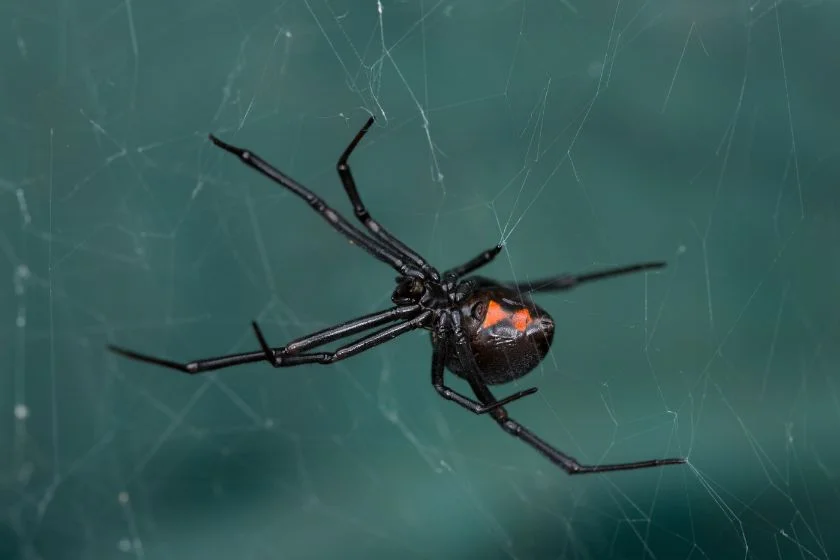
Habitat: Dark areas; crevices and woodpiles, hollow logs, loose barks, trees, bushes.
In South Africa, black widow spiders are prevalent, especially in the Western Cape. They are not particularly aggressive spiders, but if threatened or mistreated, they may bite as a last resort.
In contrast to the male widows, which have too-small mouthparts, the female black widow has long, sharp fangs that may puncture human flesh.
A black widow bite may not hurt right away, but with time, the pain will spread up your limbs to your lymph glands.
The bite will significantly impact blood pressure, resulting in weakness, leg pain, cramps, stiffness of the abdominal muscles, and profuse sweating.
Make sure you go to the hospital to get treated if the dreadful black widow spider bites you.
Even though black widow bites can be fatal, no deaths have been recorded in South Africa in the past 50 years due to the rarity of these attacks.
14. African Elephant
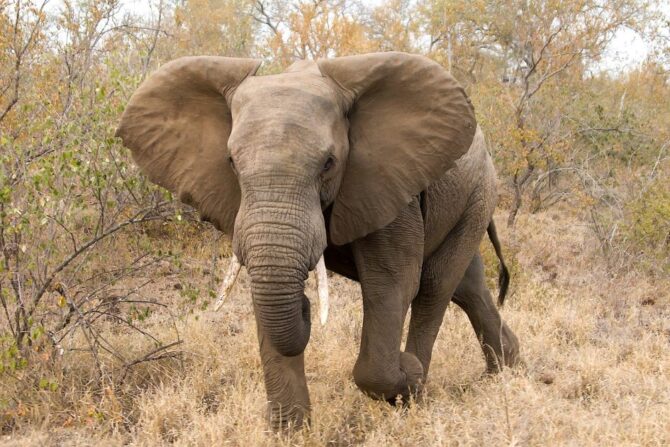
Habitat: Tropical forests, grasslands, wetlands, shrublands, savannas
The largest terrestrial animal at the moment is the African elephant, which may weigh up to 7000 kg. It can crush a person to death with its weight.
They can hurt you even though they are primarily herbivores and won’t attack people for food. However, there are man-eating elephants in India, so this isn’t always the case.
Human attacks by elephants are becoming more frequent. Elephant assaults on people have occurred 412 times in the last 15 years (2000–2020), resulting in 274 fatalities and 138 injuries.9
African elephants are typically non-aggressive creatures, although they may attack if they feel frightened, helpless, tormented, or provoked. It is best to stay away from an enraged elephant.
Related: 25 Animals With Big Heads (List With Pictures)
15. Great White Shark
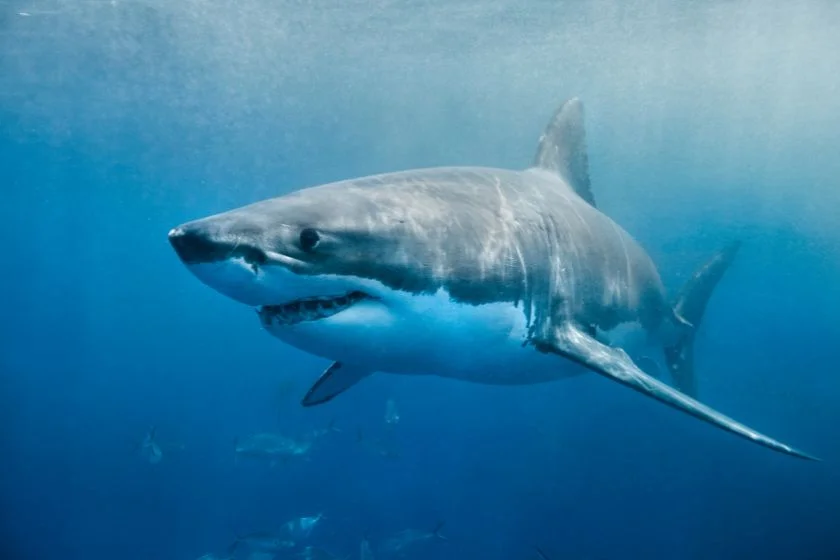
Habitat: Temperate coastal and offshore waters.
Great white sharks are very dangerous marine mammals that have killed more people than any other shark species. They represent the most significant danger to human surfers in the nation.
Reports show that the great white shark murdered six people in 2020.10 Although the reason these sharks attack people is still unknown, a study concluded that this is because great white sharks confuse people for their prey.11
Due to the presence of seals, which are a white shark’s preferred meal. Dyer island is one of South Africa’s locations with the densest known Great white shark populations.
Capetown, Sodwana Bay, and Protea Banks are places where you can find these great white sharks and other large pelagic sharks, so be careful when you are in these areas.
South Africa Wildlife Safety Tips
In South Africa, many dangerous animals are borderline deadly, so it is vital to follow safety rules while traveling in nature. Some of these tips include:
- Never approach any wild animal, including predators: Dangerous animals may be unpredictable and aggressive; they can bite, attack, and kill if provoked or threatened. Some of these animals may carry diseases transmitted through bites or scratches from their teeth or claws (such as rabies).
- Do not run if you encounter a predator: If you have time to think, identify the animal and determine whether it is dangerous or not. If so, do not approach but instead find cover where you can wait until help arrives.
- Always stay in your car when driving through game reserve areas: If you are driving through a game reserve area, keep your windows up and doors locked. Please do not leave your car to take photos of animals or take selfies with them. If you’re not sure what to do, ask someone who works at the park for advice before heading out onto the road.
- Do not attempt to feed a wild animal: Do not feed wild animals like spotted hyenas, jackals, etc., as this can make them addicted to human food, which makes them more likely to attack humans. Wild animals are not pets and should not be treated as such. Keep your distance!
- Avoid swimming in crocodile-infested rivers or lakes: The Crocs are very aggressive and will attack you if they feel threatened by your presence.
Frequently Asked Questions
Are there any dangerous animals found in South Africa?
South Africa is renowned for its naturally stunning landscapes and for having a sizable area of wildlife-rich protected land. South Africa is home to a wide variety of animals and insects, some of which are fairly harmful. The African buffalo, great white shark, brown widow spider, boomslang, Gaboon viper, common ostrich, bearded vulture, and others are examples of these hazardous animals.
What are the “big 5” in South Africa?
The Big five are quite significant. This phrase, which is synonymous with safaris, exudes a strong sense of adventure and excitement. What are the big 5 then? This is a reference to some of the most hazardous animals in Africa, such as Cape buffalo, African lions, leopards, and rhinoceroses.
Conclusion
South Africa is one of the most fascinating places in the world to visit. It has numerous exotic species that live in various habitats all around the nation.
It is crucial to abide by the safety precautions recommended in this article if you encounter any of these most dangerous animals in South Africa.
Next Up…
Discover the Most Dangerous Animals in Africa:
References & Notes
- Wootson R. C. Kenya hippopotamus deaths: 2 tourists mauled on Lake Naivasha. The Washington Post, 2018.
- South Africa hippo ‘kills three’ near Zimbabwe border. BBC News, 2015.
- World malaria report 2021. WHO.
- Thompson H. Yes, Lions Will Hunt Humans if Given the Chance. Smithsonian Magazine, 2015.
- Viegas J. 27-foot-long crocodiles could swallow us whole. NBC News, 2012.
- Sidach, Serguei S, Isabelle M Mintz. Kurtoxin, a gating modifier of neuronal high- and low-threshold ca channels. Journal of neuroscience, 2002.
- Beware! Snakes and spiders to watch out for. News24, 2013.
- Drewe, J. A., O’Riain, Et. al. (2012). Survey of Infections Transmissible Between Baboons and Humans, Cape Town, South Africa. Emerging infectious diseases, 18(2), 298–301.
- Ram, A. K., Mondol, S., Et. al. (2021). Patterns and determinants of elephant attacks on humans in Nepal. Ecology and evolution, 11(17), 11639–11650.
- Hoose V. N. (2021). Shark attack numbers remained ‘extremely low’ in 2020, but fatalities spiked. Florida Museum Science.
- Ryan A. L., Slip D. J., Et. al. (2021). A shark’s eye view: testing the ‘mistaken identity theory’ behind shark bites on humans. Journal of The Royal Society Interface.
